Tested: Best NACS-to-CCS Adapters
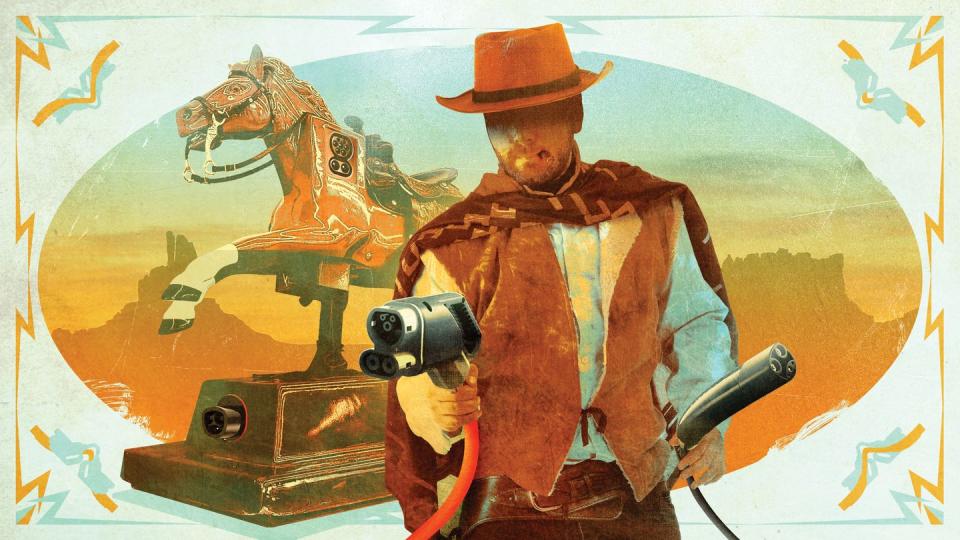
"Hearst Magazines and Yahoo may earn commission or revenue on some items through these links."
Feeling lucky, punk? Well, if you're an EV owner thirsty for more charging options, you're in luck, as the time has come that non-Tesla EVs can DC fast-charge at Tesla Superchargers. This year, Ford and Rivian rolled out software updates to their vehicles and started shipping adapters to customers to unlock Tesla's vast charging network to owners of those vehicles. And more automakers will join the alliance over the next few years. In addition to this limited ability for certain automakers' vehicles to charge natively at Superchargers, Tesla has rolled out in some areas Superchargers that have a built-in "Magic Dock" adapter to charge almost any EV, but they are few and far between.
The Tesla Supercharger network, which up until recently was exclusive to the Model S, 3, X, Y, and Cybertruck, spreads wide across the U.S. like celebrity gossip. There are over 50,000 Tesla Superchargers that fill gaps in North America where public EV charging is late blooming. Tesla Superchargers have earned a reputation for being reliable and quick, and due to their abundance of charging plugs at each location, they can typically charge more vehicles than the average Electrify America, Chargepoint, or EVgo stations can accommodate.
Key Takeaways:
Great adapters come to those who wait. A sucker for freebies, we prefer the automaker-provided unit of the NACS-to-CCS adapters available today. It doesn't come with a carrying case, but the fact it's included with the purchase of the vehicle makes it a few-hundred-dollar savings versus a third-party option. We also liked the built-in Tesla Magic Dock, but not all V3 Tesla Superchargers have them, so it pays to bring your own.
If you can't wait, the Lectron Vortex Plug is our preferred third-party NACS-to-CCS adapter for DC fast-charging. We preferred its latching system over the A2Z EV.
But the A2Z unit is substantially more compact. It weighs marginally less than the manufacturer-provided unit and Lectron Vortex Plug and is significantly smaller than the Lectron. Even while stored safely in its foam-padded storage case, it's still smaller than the Lectron.
To unlock the power from Tesla, automakers must adopt Tesla's proprietary North American Charging Standard (NACS) plug as the rest of the EV market instead overwhelmingly uses the Combined Charging Standard (CCS) port. Thus, an adapter is needed. If you can't wait for the manufacturer-provided freebies, two aftermarket options are available to help folks skip the wait.
How We Tested
We conducted DC fast-charging tests four ways using our long-term 2022 Rivian R1T Adventure pickup at a nearby V3 Tesla Supercharger. The R1T was preconditioned before each charge, but charges took place on different days, using different chargers at the same station, at varying ambient temperatures. This method accurately represents a real-world scenario and depleting the battery back to 10 percent from 90 multiple times in a single day wasn't possible. While the results will vary, our data does give us proof that the third-party adapters work, and quickly.
Our fast-charging test measures how long it takes to charge an EV from 10 to 90 percent. This test is designed to illustrate three important factors of fast charging: peak charge rate, how dramatically the rate begins to taper down as the battery is filled, and overall charge time.
We also attempted to charge vehicles that weren't yet officially supported by the NACS Alliance with each of these adapters to confirm that you can't just buy a third-party adapter to bypass software updates.
Our Top Picks
What's the Difference Between NACS and CCS?
Everyone has a favorite sports team, but when it comes to EVs there are only a few choices as to what charging port your vehicle is equipped with. All current Teslas use the Tesla-created North American Charging Standard (NACS) connector, while almost every other EV uses the SAE CCS (combined charging system) connector, which is easily identifiable by its round upper connector (that's known as a J1772 connector, which is used for AC charging) and two pins at the bottom that are used for DC fast-charging. Plus, there are still a couple holdouts using a CHAdeMO connector, such as the plug-in-hybrid Mitsubishi Outlander.
Can You Charge Other EVs at a Tesla Supercharger?
The answer to this is both yes and no, which depends a lot on which vehicle you own and the type of Tesla Superchargers near you. If you currently own a Ford Mustang Mach-E, F-150 Lightning, Rivian R1T, or R1S, you can charge at any V3 (250 kW) Tesla Supercharger using your manufacturer-provided adapter, or these aftermarket units, without downloading the Tesla app.
For vehicles in the alliance, adapters and Magic Docks aren't necessary. Charging and payment is handled automatically in the vehicle's proprietary smartphone app or native software. In fact, those vehicles will automatically seek out compatible chargers, ignoring V2 Tesla Superchargers (150 kW). For route planning, you can use this Tesla Supercharger map to find one of the over 15,000 compatible chargers near you. Note that you can use chargers in the "Superchargers Open to Other EVs" and "Superchargers Open to NACS" filters for vehicles included in the alliance.
If you currently own anything else, say a Volkswagen ID.4, Honda Prologue, Chevrolet Bolt, or BMW i4, you can only charge at Tesla Superchargers that are equipped with a Magic Dock and you must use the Tesla smartphone app to initiate charging and payment. Buying these third-party adapters doesn't mean you can park and charge at any Tesla station. We tried. To see Superchargers with Magic Docks using the Tesla Supercharger map, select "Superchargers Open to Other EVs" filter.
If you currently own an electric vehicle that uses an 800-volt or higher battery architecture, such as a Hyundai Ioniq 5, Kia EV6, Porsche Taycan, or Lucid Air, you're able to use Tesla Superchargers with a Magic Dock and Tesla app, but you may experience slow charging speeds. Why? Currently, the Magic Dock chargers have a maximum output of 500 volts, as they were originally designed for only Teslas—which up until the Cybertruck launches, all used a 400-volt battery system like most EVs. Meanwhile, 800-volt EVs have an onboard inverter to make them compatible, but that inverter is limited by the hardware the automaker specified, which tends to be from 50 to 150 kW. This makes them unable to charge at their peak DC fast-charge rates at Tesla's 500-volt Superchargers, whereas fast-chargers elsewhere in the public charging infrastructure, such as Electrify America, have a 1000-volt maximum.
How to Use a NACS-to-CCS Adapter
If you've charged your electric vehicle at a DC fast-charger before, there isn't much extra you have to know, but the experience is slightly different depending on which vehicle you own. No matter what vehicle you're driving, you must be at a V3 Supercharger, as the slower V2 chargers aren't compatible with non-Teslas. You can park your car in the charging space and plug the charging cord into the adapter and into your car before downloading any apps.
If you're driving a Ford, Rivian, or a vehicle from another manufacturer that has joined the alliance and launched a vehicle software update to support DC fast-charging at Tesla Superchargers, it's as easy as plugging in. So long as you've already verified the payment method in your vehicle's app, charging will begin automatically. Tesla chargers don't have cash or credit card kiosks, as payments are handled through the company's app. The car will indicate charging has begun, and from there it's just a matter of waiting until the battery has reached your desired state of charge.
If you're attempting to charge at a Tesla Supercharger with a vehicle that isn't supported natively, you must download the Tesla smartphone app from either the Apple App Store or Google Play Store. The app is free and setting up an account can be completed in about five minutes. Once you've downloaded the app and logged into your account, under "Charge Your EV" is a button titled "Find a Charger." Touch the "Find a Charger" button, select the Tesla Supercharger station you're parked at, and touch the "Charge Here" icon at the lower part of the screen. The following screen will show the charging fee (typically $0.35 to $0.60 per kWh) and the default payment method. If the payment method is blank, it will prompt you to add the necessary information before charging can begin.
These NACS-to-CCS adapters are only for DC fast-charging and won't work at Tesla's Level 2 Destination chargers.
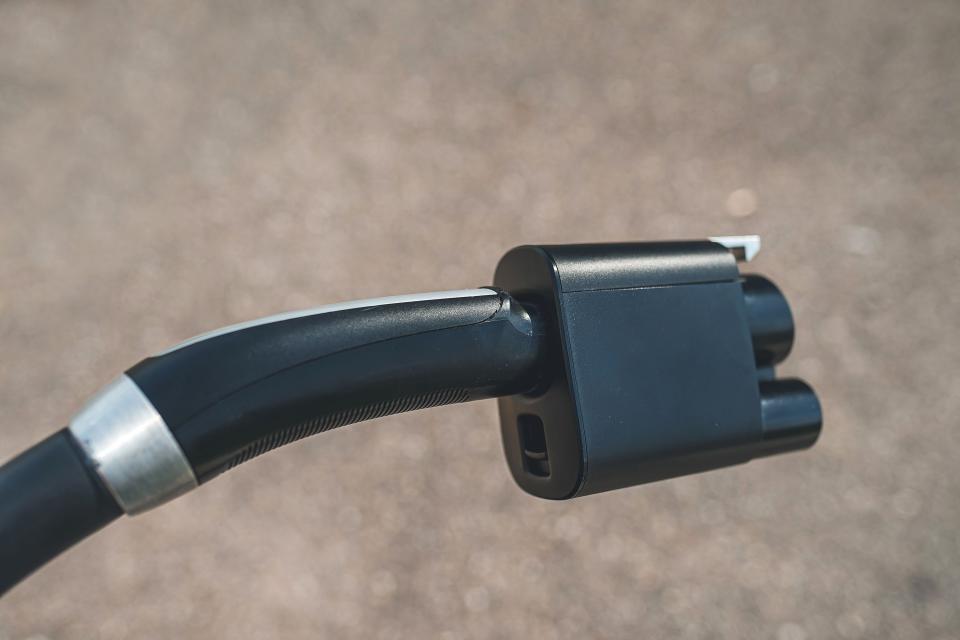
Rivian-Approved NACS Adapter
Marc Urbano - Car and DriverRivian began shipping these adapters in April 2024 to customers who requested them. They "prioritize our longest-standing owners for earliest fulfillment," but stated they will contact new owners separately about getting adapters.
The Rivian-provided adapter is identical to the unit shipped to Ford owners. That's because they are supplied by Tesla and why they look so similar to the Magic Dock at participating Superchargers. Only one adapter can be requested per vehicle, and there is no storefront to purchase multiple units, should yours grow legs and go missing. We expect Rivian and Ford to sell extras in the future, once they are caught up on shipments to existing orders.
Rivian states on their website "Only Rivian-provided NACS DC adapters are authorized for use on the Tesla Supercharger network. Use of unapproved adapters can result in damage to your vehicle. Any damage caused by use of third-party adapters is not covered under warranty."
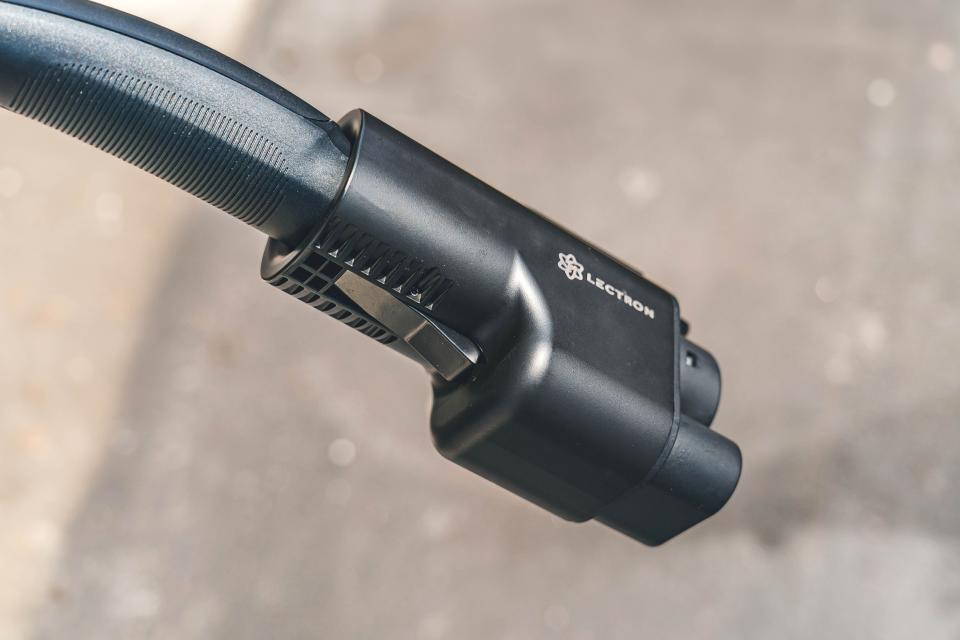
Lectron Vortex Plug
ev-lectron.com
$199.99
Marc Urbano - Car and DriverThe Lectron Vortex Plug is the heaviest of the NACS-to-CCS adapters we tested, but we preferred the confident click of its locking mechanism over the A2Z EV adapter.
Unfortunately, it doesn't include a carrying case and, like the A2Z EV unit, has a shorter one-year warranty compared with the Rivian-approved adapter. However, unlike the Rivian-provided unit, you don't have to wait long for them as they are in stock and eager to ship from Shakopee, Minnesota.
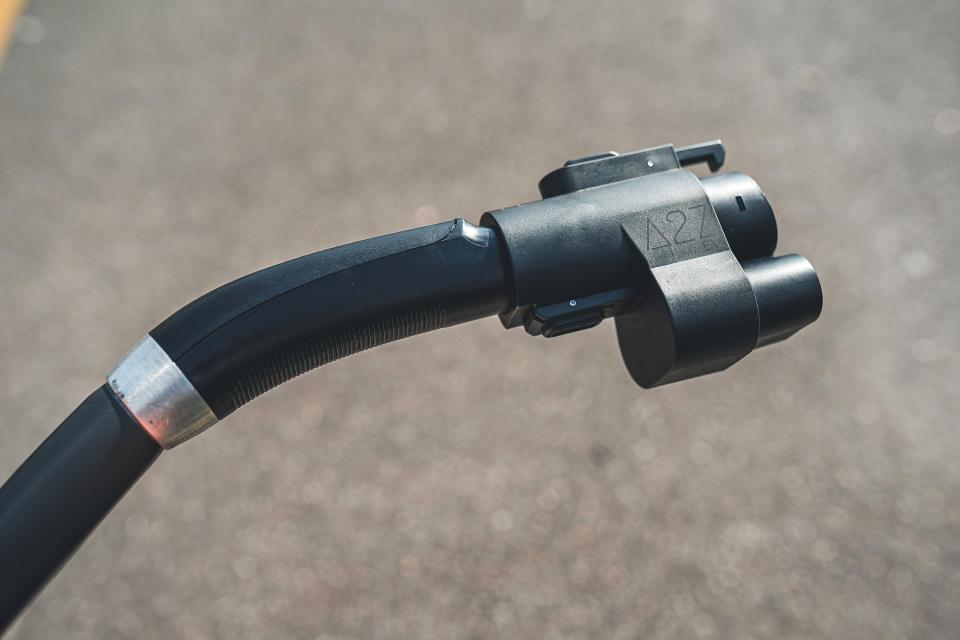
A2Z EV Typhoon Plug
a2zevshop.com
$197.00
Marc Urbano - Car and DriverIt's a wee lad, and that's what we like most about the A2Z EV Typhoon Plug. It's so compact, in fact, that the foam-padded carrying case included is too small to fit the Lectron and Rivian-provided units.
The A2Z EV Typhoon Plug's size makes it easier to store, and it's the lightest adapter of this test. While it charged just as reliably as its competitor, our biggest gripe was with its locking mechanism. The Tesla NACS plug easily fixes to the adapter, but its sliding lock doesn't give us that confident snap the Lectron unit does.
If the handy carrying case and compact size are important enough to you, the A2Z EV Typhoon Plug is indeed the best choice.
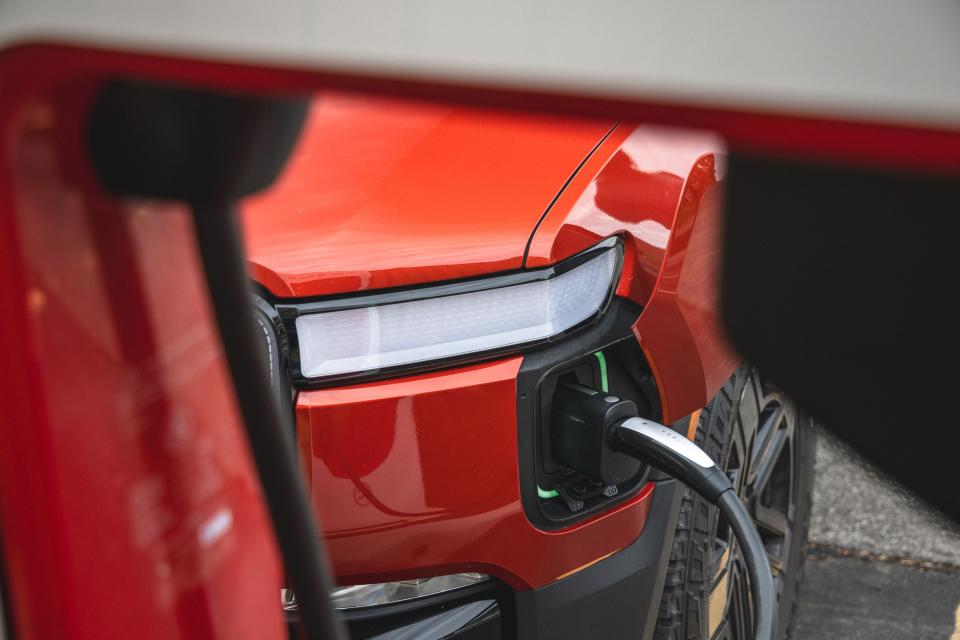
Tesla Supercharger With Magic Dock
Michael Simari - Car and DriverOf the more than 15,000 Tesla Superchargers open to Ford and Rivian, there is a small percentage that will work with any CCS vehicle without needing to wait for software updates or purchase of adapters. Using the others with an automaker in the Tesla alliance will require one of these adapters, and since there weren't any significant performance differences among the three options, the choice may come down to how long you're willing to wait for the automaker-provided unit.
You Might Also Like

 Yahoo Autos
Yahoo Autos 